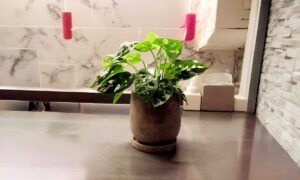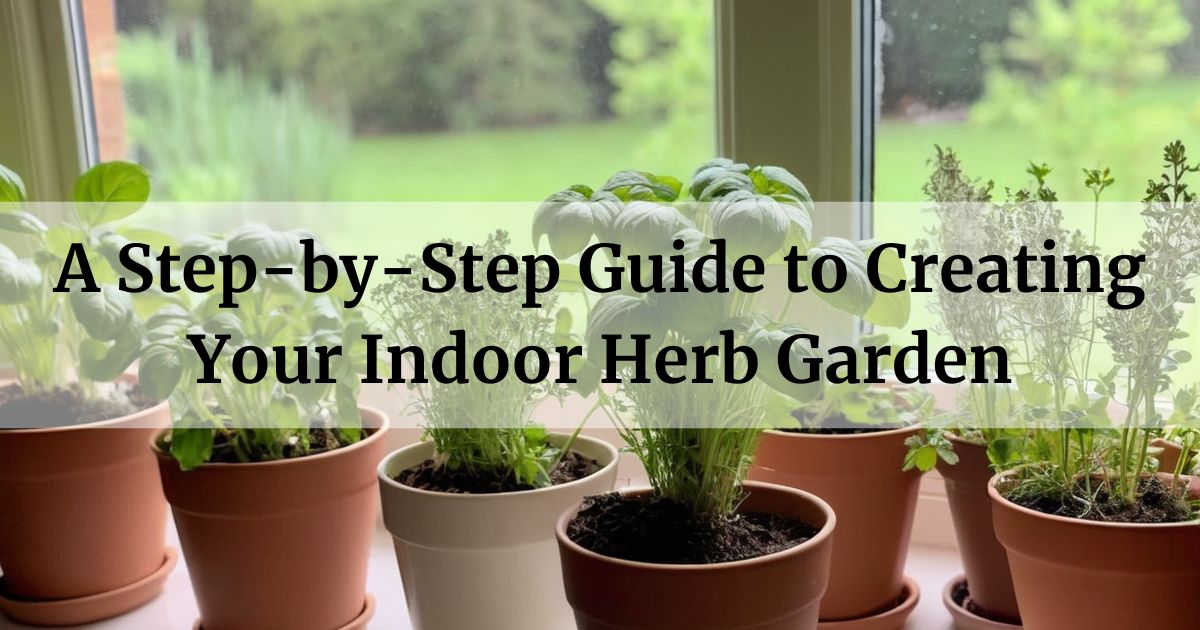
In this article, we’ll explore the top herbs that flourish indoors, essential equipment and materials, and provide step-by-step instructions to create your indoor herb garden.
In this article
5 Tips for Indoor Herb Gardening
Before we dive into the world of specific herbs, here are some valuable tips to ensure your indoor garden thrives year-round.
- Choose a sunny location: Most herbs require at least six hours of sunlight per day, so choose a location near a window that gets plenty of natural light.
- Use well-draining soil: Herbs don’t like to sit in water, so make sure your soil is well-draining to prevent root rot.
- Water regularly: Herbs need to be watered regularly, but be careful not to overwater. Check the soil moisture level before watering to avoid drowning your plants.
- Fertilize occasionally: Herbs benefit from occasional fertilization to promote healthy growth. Use a balanced fertilizer every few weeks during the growing season.
- Prune regularly: Regular pruning will help keep your herbs healthy and promote bushy growth.
Herbs That Grow Indoors All Year Round
Now that you know some tips for maintaining your indoor herb garden, let’s take a look at some of the best herbs for indoor gardening that can be grown year-round:
Basil

- Easy to grow and adds a delicious flavor to many dishes.
- Requires plenty of sunlight and well-draining soil, but with the right care, it can thrive indoors.
- Grows quickly and can be harvested frequently, making it a great choice for indoor gardening.
Chives
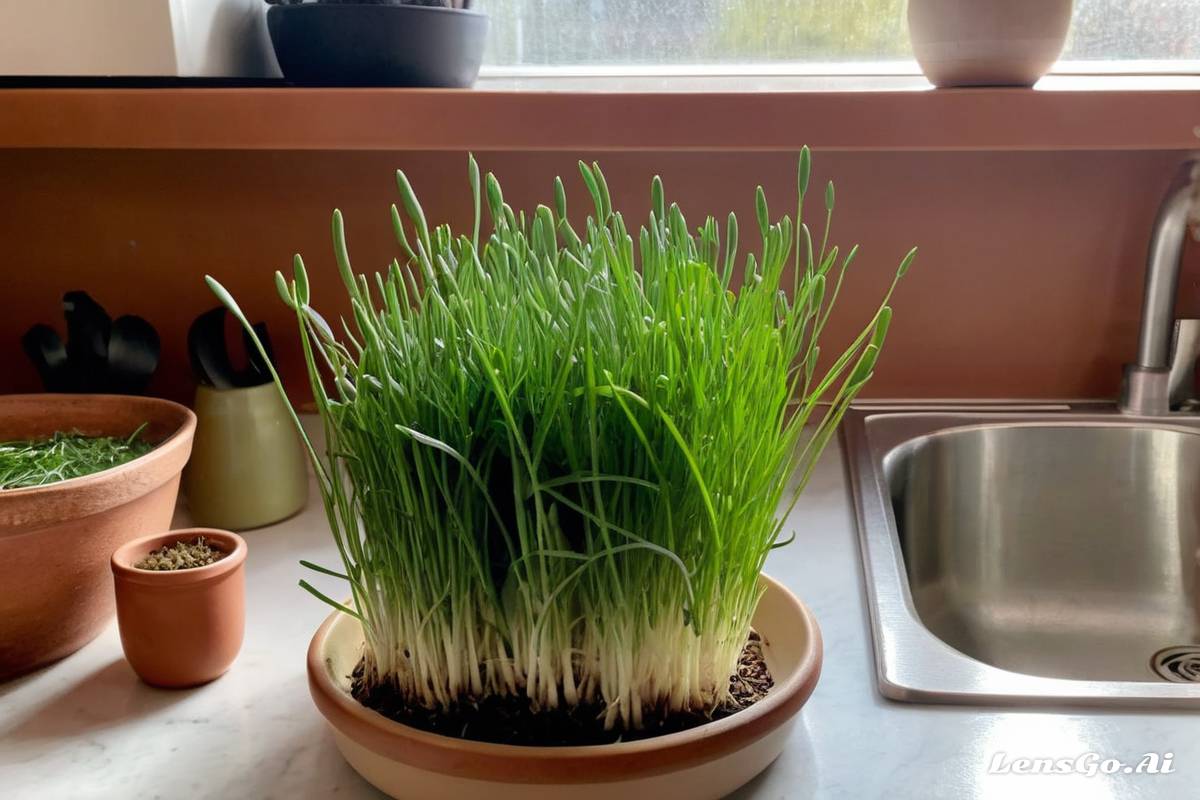
- Another easy-to-grow herb that can be grown indoors year-round.
- Requires moderate sunlight and well-draining soil, and they can be harvested as needed for a mild onion flavor.
- Can be grown in small pots and is a great choice for beginners.
Mint

- A fragrant herb that can be grown indoors in a pot or hanging basket.
- Requires moderate sunlight and well-draining soil, and it can be harvested as needed for use in teas, cocktails, and other recipes.
- Grows quickly and can be invasive, so it’s best to grow it in a separate container.
Parsley
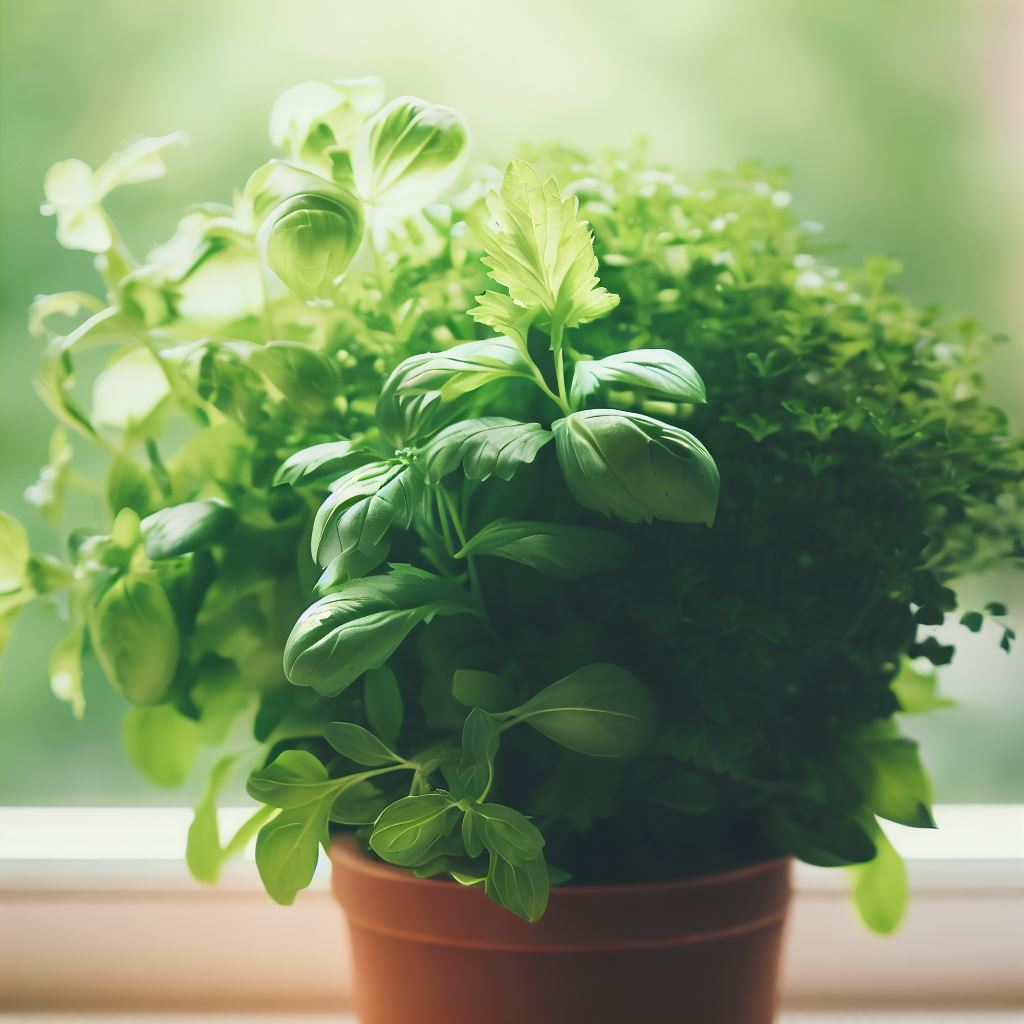
- A versatile herb that can be used in a variety of dishes.
- Requires moderate sunlight and well-draining soil, and it can be harvested as needed for a fresh, mild flavor.
- Can be grown from seed or purchased as a small plant, making it a great choice for indoor gardening.
Thyme

- A hardy herb that can be grown indoors year-round.
- Requires plenty of sunlight and well-draining soil, and it can be harvested as needed for use in soups, stews, and other recipes.
- Can be grown in small pots and is a great choice for beginners.
What You’ll Need
Equipment / Tools
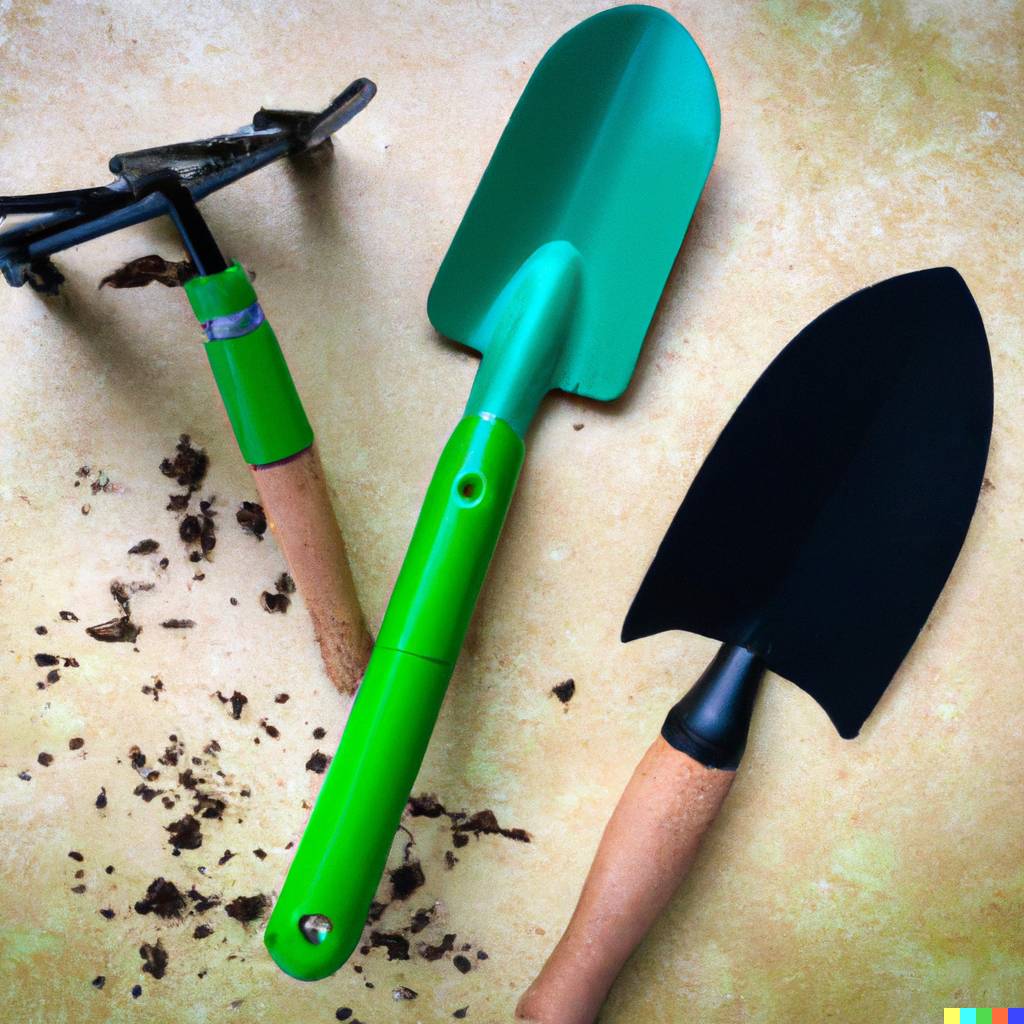
To get started with indoor gardening, you’ll need some essential equipment and tools:
- Pots or Containers: Choose pots or containers with good drainage to prevent overwatering.
- Potting Mix: Opt for a high-quality potting mix enriched with nutrients.
- Watering Can or Spray Bottle: Ensure your herbs receive the right amount of moisture.
- Pruning Shears: Keep your herbs in check with regular pruning.
- Grow Lights: Inadequate sunlight? Consider investing in grow lights to provide your herbs with the necessary light.
Materials
Here are some materials you’ll need:
- Seeds or Seedlings: Decide whether you want to start from seeds or use young plants.
- Stones or Gravel: Use these at the bottom of your pots to aid drainage.
- Labels: Keep track of your herb varieties by labeling your pots.
Choosing a Pot Size for Herbs

Selecting the right pot size for your herbs is crucial. Larger pots provide more room for root growth, while smaller ones can restrict it.
Consider the following when choosing pot sizes:
- Basil: A 6-8 inch pot works well.
- Mint: Opt for a larger pot (10-12 inches) due to its rapid growth.
- Chives: A 4-6 inch pot is suitable.
- Parsley: Choose an 8-10 inch pot for parsley plants.
With the basics in place, it’s time to roll up your sleeves and get your hands in the soil.
Planting Instructions
Here’s a step-by-step guide to help you get started:
Choose a Location
Place your herb garden in a spot where it can receive ample sunlight. Herbs typically need around 6-8 hours of sunlight each day. If natural light is scarce, consider using grow lights to supplement it.
Tip: Rotate your pots regularly to ensure all sides of your herbs receive equal sunlight.
Choose and Prepare Pots
Select the pots that match the herb varieties you plan to grow. Ensure the pots have drainage holes at the bottom to prevent waterlogged roots.
- Add a layer of stones or gravel at the bottom of each pot to improve drainage.
- Fill the pots with potting mix, leaving about an inch of space at the top.
- Gently tap the pots to settle the soil.
Plant the Herbs
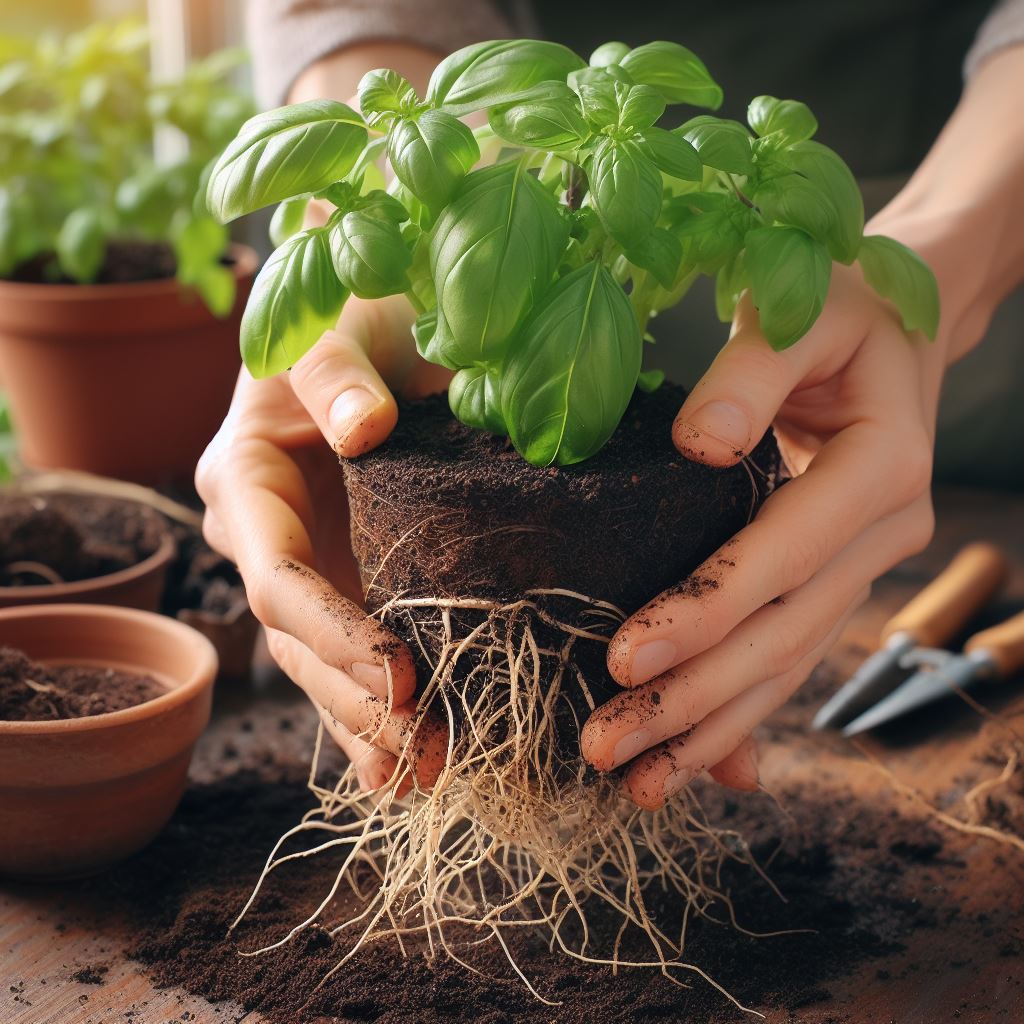
Now it’s time to introduce your chosen herbs to their new homes.
- Carefully remove the herbs from their original containers or transplant the seedlings into the prepared pots.
- Make a small hole in the soil and place the herb in it.
- Cover the roots with soil and gently press down to secure the plant.
Tending Your Garden
Maintaining your indoor herb garden involves regular care:
- Watering: Keep the soil consistently moist but not soggy. Overwatering can lead to root rot.
- Pruning: Trim your herbs regularly to encourage bushier growth and prevent them from becoming leggy.
- Fertilizing: Use a balanced, water-soluble fertilizer every 4-6 weeks during the growing season.
Harvest as Needed
The best part of indoor gardening is enjoying the fruits of your labor. Harvest your herbs when they reach a size that suits your needs. Be sure not to harvest more than one-third of the plant at a time to allow for continued growth.
Move Your Herb Garden Outdoors
During the warm months, consider moving your indoor herb garden outdoors to give your plants some fresh air and natural sunlight. Just be sure to acclimate them gradually to the outdoor conditions.
Frequently Asked Questions
How often should I water my indoor herb garden?
You should water your indoor herb garden regularly, but be careful not to overwater. Check the soil moisture level before watering to avoid drowning your plants.
Can I grow herbs indoors year-round?
es, many herbs can be grown indoors year-round with the right care and attention.
What kind of fertilizer should I use for my indoor herb garden?
Use a balanced fertilizer every few weeks during the growing season to promote healthy growth.
Congratulations, you’ve just created your own indoor herb garden!

